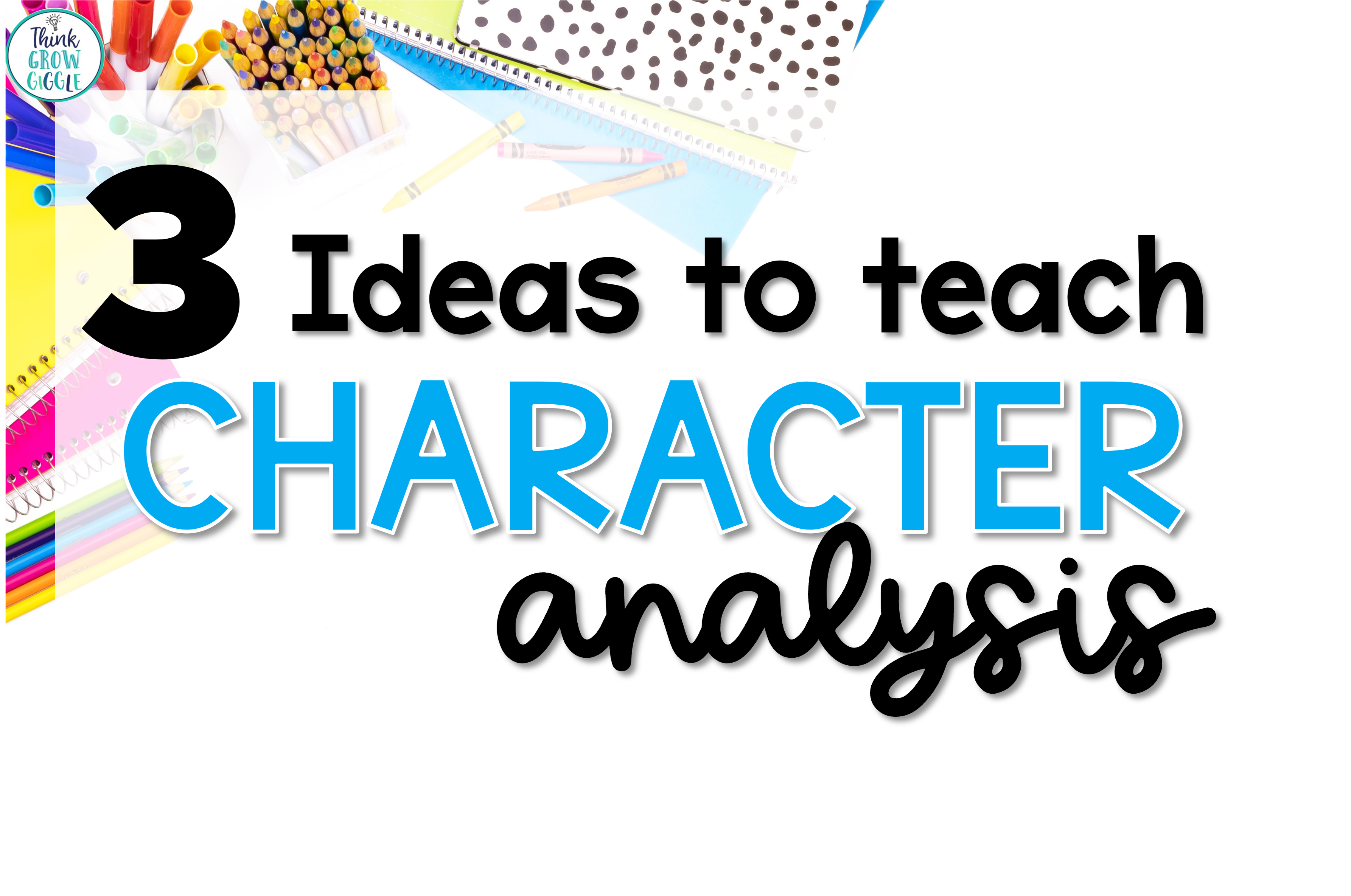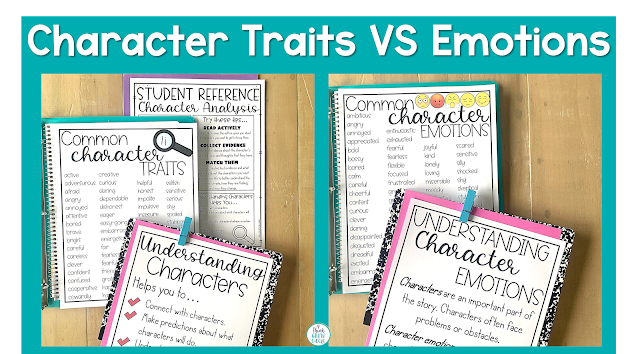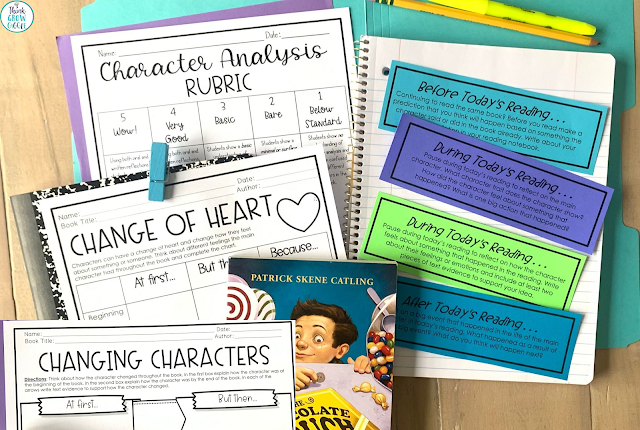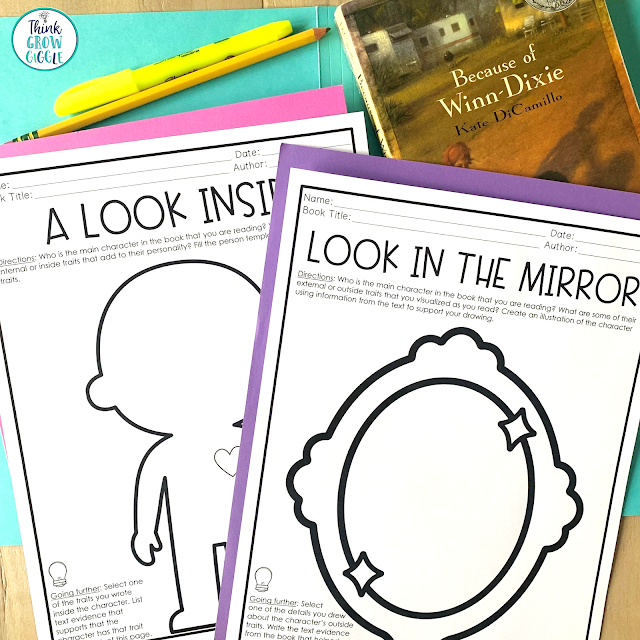As the school year progresses and your students begin to read more challenging, complex chapter books, helping them to understand the characters they meet becomes a critical part of their reading comprehension.
Students must understand the characters that they meet to help them better understand the story and theme of the book. I want my students to truly understand character traits and emotions, be able to differentiate between the two, and how those traits and emotions play a part in the choices that the characters make in the story.
That is a whole lot for young readers! But, without truly understanding the characters, the students will not be able to predict, connect, or infer as they read.
That is why character development is an important unit that I love to teach each year. It is not an easy topic to dive into with upper elementary students, but I can help! Try these tips to make your next character development unit that you teach a big success!
1. Differentiate Between Character Traits and Character Emotions
This is such an important step! Students must learn the difference between a character trait and a character's feelings and emotions. Traits and emotions are very different. We discuss how character traits reflect the character's personality and emotions are how the character is feeling. While character traits can change throughout a story, the feelings and emotions of characters change quite frequently.
The first lesson that I do when it comes to differentiating between character traits and character emotions is with the book The Raft by Jim LaMarche. This story tells about a young boy who is upset that he has to spend the summer with his grandmother. By the end of the story, we learn how his feelings and emotions have changed, but his character traits have stayed the same. I love this book and highly recommend it as a read-aloud during your character unit.
Don't forget to decide on which term you will use when discussing character traits: outside or external traits to discuss a character's physical traits and inside or internal to discuss personality traits.
Grab the free activities to start your first lesson about character traits VS character emotions!
2. Practice Character Reflections with Note-Taking
Hold students accountable for practicing character note-taking with graphic organizers that help them focus on a specific character reflection task and strengthen their character understanding skills.
We use character graphic organizers that focus on:
- what the character thinks
- what the character says
- what the character does
These three prompts help the students to reflect on what information the author gives about the character and then use the information to infer a character trait. When we first begin our character unit, we work as a class to brainstorm different character traits and emotions that characters may be and feel. We leave an anchor chart up in the classroom for easy access, but I also give students a small size of the character trait list for their reading notebooks.
The first lesson that I do with character note-taking is always done with a picture that I have previously read. I love to use previously read books for a new mini-lesson because it allows the students to focus on the skill at hand with a book that they already heard, discussed, and understand. It allows them to be much more successful with the character analysis objective at hand. You can find any book that you have already read to your students to try this out. I love to reread The Curious Garden for this activity.
3. Discuss How Characters Change
Focusing on how characters change truly helps the students better understand the character and the story. It allows them to make better predictions and inferences as they read, too.
To practice this, we collect evidence to show how a character felt at the beginning of the book, and how they felt at the end of the book. Collecting text evidence is an important step to prove how the character has changed. I love to tie in visualizing during this activity. Students create sketches to show the different emotions and feelings of the character throughout the story. We revisit The Raft by Jim LaMarche to discuss changing characters. Another favorite to discuss changing characters is Enemy Pie by Derek Munson.
Teacher tip: I love to give students specific before, during, and after reading tasks that focus in on gathering text evidence about how characters change. This helps students focus and read with purpose.
BONUS TIP
Before having kids, head out to read their own book and dive into character analysis without you, read character-focused short stories. By choosing stories designed for character analysis, you will be setting your students up for success. These passages focus on character development, traits, and theme/life lesson, making it easy to see character traits and how they change.
Our Character Understanding unit lasts weeks. By the time it ends, the kids are bummed. They love reading and reflecting on all of the characters that they meet while reading independently and those we met during our read-aloud time. I know that the time I invest in helping students to critically analyze a character is well worth it! It not only helps them understand the characters that they meet, but also understand the overall story and plot, theme, and make connections as readers.
Grab everything you need to teach a
Character Study Unit right here:
You will also love reading:
Check out my favorite character activities HERE.
LOVE these ideas? Pin to save!
*affiliate links: “Think Grow Giggle is a participant in the Amazon Services LLC Associates Program, an affiliate advertising program designed to provide a means for sites to earn advertising fees by advertising and linking to Amazon.” (source: Section 5)





















